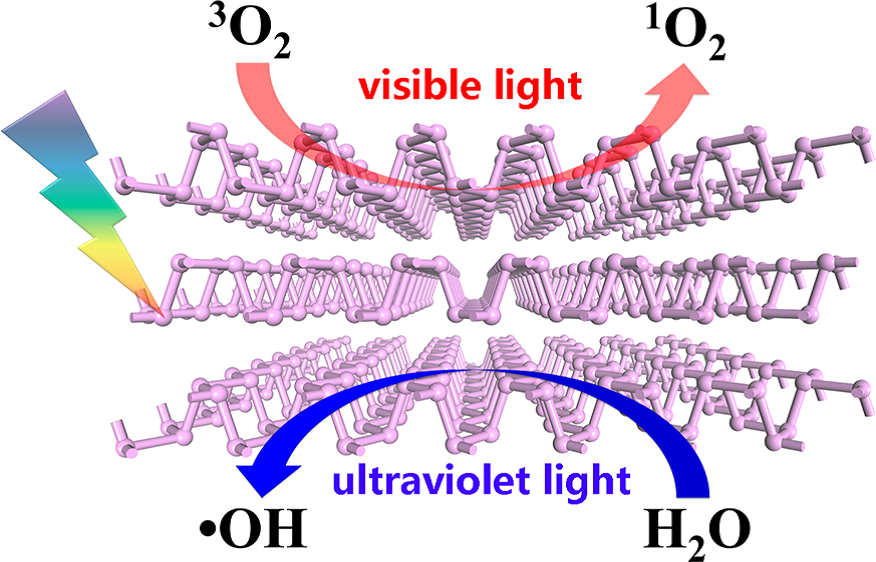Optically Switchable Photocatalysis in Ultrathin Black Phosphorus Nanosheets
Recently, new progress in black phosphorus nanosheets-based photocatalysts has been made by Prof. Yi Xie’s group in University of Science and Technology of China. They demonstrated the optical switching effect in photocatalytic reactive oxygen species (ROS) generation in black phosphorus nanosheets, thus highlighting the crucial role of many-body effects in low-dimensional semiconductor-based photocatalysts. The work has been published as an article in Journal of American Chemical Society (J. Am. Chem. Soc., 10.1021/jacs.8b00719).
Low-dimensional semiconductors hold great potential in the field of photocatalysis, whereas the concomitantly promoted many-body effects mediated by Coulomb interactions have long been ignored. Such effects would lead to some intriguing, nontrivial band structures, thus promising versatile photocatalytic performances and optimized strategies. Here, by taking black phosphorus (BP) nanosheets, they demonstrated that subband structure, originating from giant electron–electron interactions and specific band dispersions, could be expected in this emerging two-dimensional material. By means of photoluminescence and ultrafast transient absorption spectroscopy, two distinct sets of photoexcitation processes in BP nanosheets were identified under visible- and ultraviolet-light excitations. Benefitting from these, BP nanosheets exhibit an exotic optical switching effect in photocatalytic ROS generation, where singlet oxygen and hydroxyl radical are demonstrated to be the dominant ROS products under visible- and ultraviolet-light illumination, respectively.
These findings open a new door to achieving high-efficiency catalysis through controllable photoexcitation.

Back
